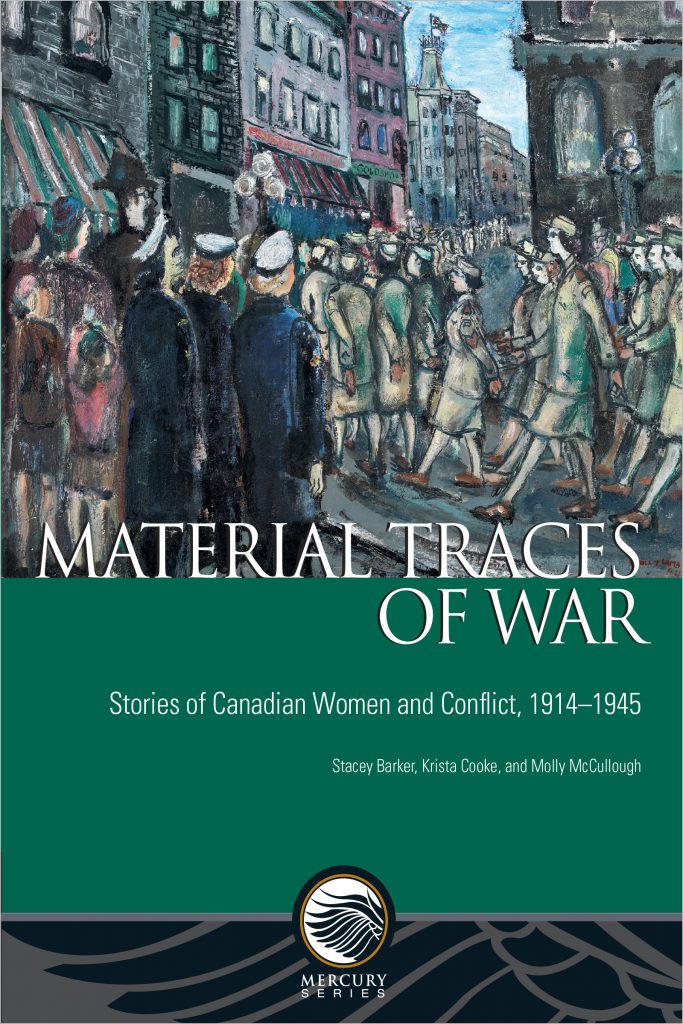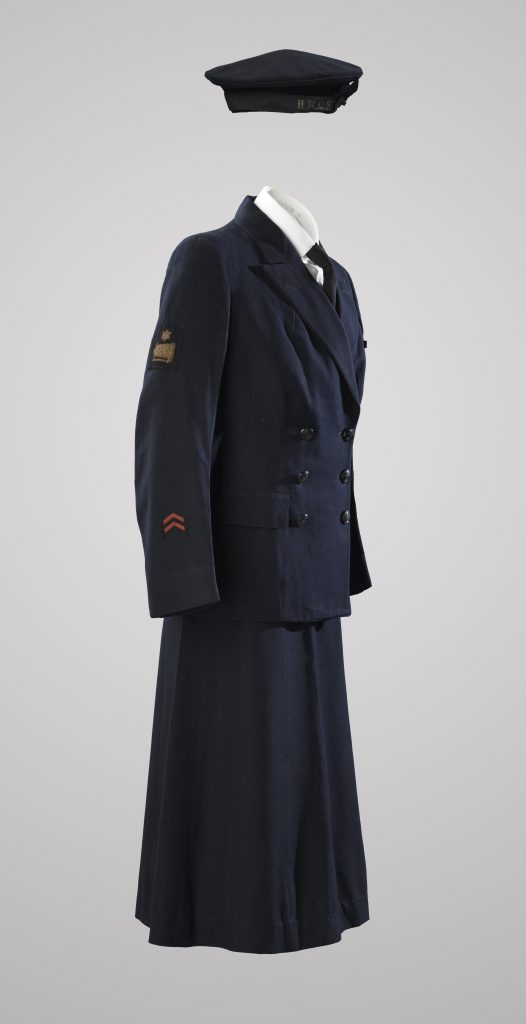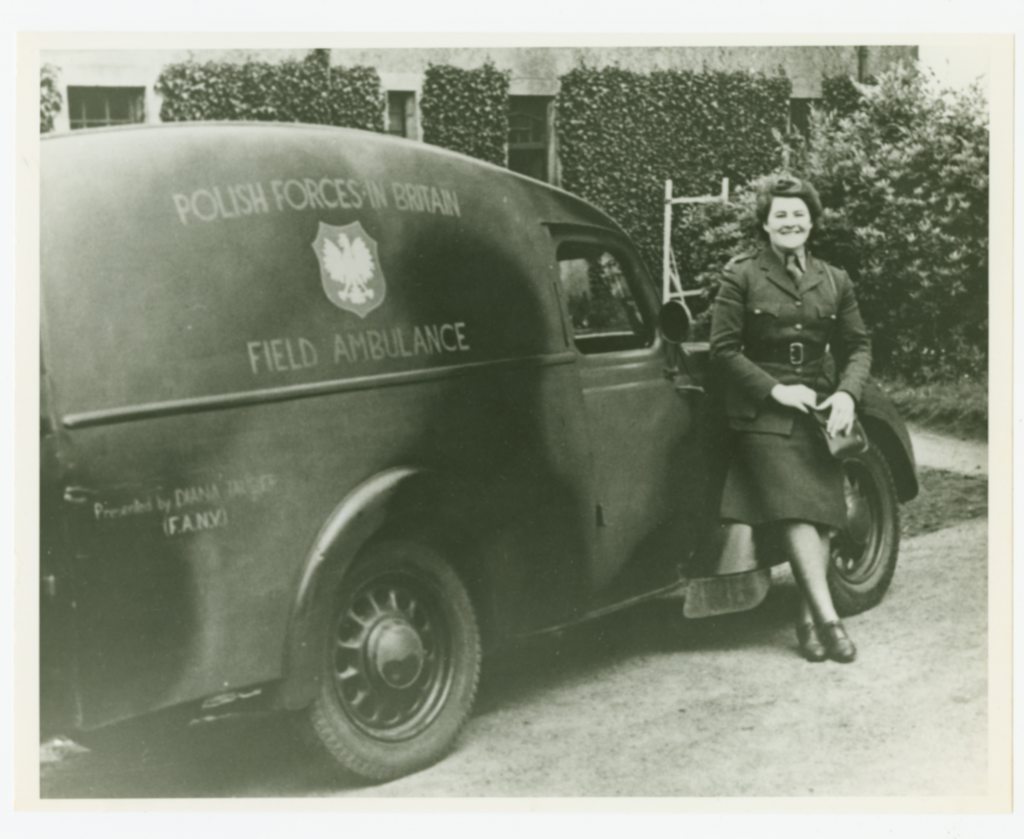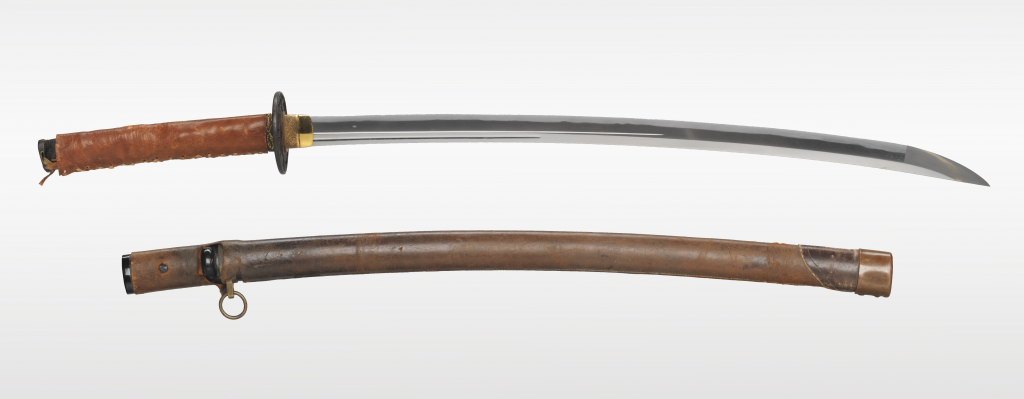A Book in the Service of a Cause: The Role of Canadian Women During the Two World Wars

Material Traces of War
Certain books are more than simply books. They are a cause. Material Traces of War: Stories of Canadian Women and Conflict, 1914–1945 is a case in point. One of the most recent books in the Mercury Series, this work fosters a greater recognition of the role women played in both World Wars. Based on artifacts, authors Stacey Barker, Krista Cooke, and Molly McCullough trace the extremely diverse stories of Canadian women’s experiences overseas and here at home. They capture the intensity of these experiences that forever changed the lives of women in Canada.
Artifacts brought to life

Leading Wren Lorna Stanger’s uniform. Source: Canadian War Museum 19790488-001-003, 19790488_005-4.
Artifacts have souls that continue to live as long as we remember their stories. Basing themselves on an exhibition, the authors wanted to take this further and deeper, with greater detail on the dramas, adventures, impacts and consequences that these objects reveal, on a society that was undergoing rapid change. Connections are drawn between photos, archives, objects and lives in this remarkable book, telling stories that will never be forgotten. This work of remembrance brings these artifacts to life and commands respect. From the glass eyes created by Kathleen McGrath to Nora Gibson’s lunch box, a page in Japanese relating the memories of Tsune Yatabe to her time as a nurse during the Spanish flu pandemic, Lorna Stanger’s service uniform, letters from Sergeant Helen Walter, Alta Wilkinson’s souvenir album, Lieutenant William Robert Boucher’s box of personal effects . . . these objects will take the reader through a whole gamut of emotions.
And herein lies the great originality of this work — how it uses objects as a springboard for a better understanding of women’s experience during war. This book is for readers interested in the two World Wars and the history and evolution of the role of women in society, as well as those interested in examples of remarkable museum practices.
“Because we approach writing as museum people, it was important to us that we communicate these experiences in a manner that was accessible and that resonated viscerally with readers. The best way we know how to do this was to write about individual women and to make their stories concrete through objects that were associated with them.” – Molly McCullough
A broad range of contexts

Lieutenant Joan Bamford Fletcher, ca. 1943. Source: George Metcalf Archival Collection, Canadian War Museum 19800177-004_1.
Many of the stories in this book reflect the scope and repercussions of the two World Wars on women from across Canada. Whether it was Michiko Ishii, still a teenager, posing with her friends in the Lemon Creek camp during the Second World War, or Dorothy Cannon, who was 7 years old in 1936 when she accompanied her father on the Remembrance Trail in the North of France, or Inge Oswald, who enlisted in the Ontario Farm Service Force — the experiences were incredibly varied. Then there’s the story of Lieutenant Joan Bamford Fletcher, who escorted 2,000 Dutch civilians across Sumatra over a six-week period in 1945, under constant harassment from hostile groups. She was a commander handing down orders to Japanese soldiers, who later presented her with a katana as a show of their respect.
“We wanted to cover a range of experiences, from the representative to the more atypical, while also choosing stories that have interesting objects attached to them with various layers of meaning.” – Stacey Barker

Lieutenant Joan Bamford Fletcher’s katana. Source: Canadian War Museum 19800177-001.
A new era
The two World Wars brought women into a new era. At that time, the inconceivable quickly became the normal — at least until the end of the conflicts.
“With skilled hands in short supply, it no longer mattered if they were male or female fingers that filled the shell casings or tightened the bolts on aircraft assembly lines.” – Charlotte Gray (foreword of the book)
“By 1944, manufacturers across the country were hiring woman of all ages, races and family situations to keep production going.” – Krista Cooke
“But what would ‘normal’ look like for postwar women? Women had made considerable gains in wartime. They had pushed for active wartime roles, created some of their own, and took advantage of new opportunities.” (Barker et al. 2021: 257)
The authors
- Stacey Barker is a historian at the Canadian War Museum. She holds a doctorate in history from the University of Ottawa and has worked as a public historian for over a decade.
- Krista Cooke is a curator at Parks Canada with more than 20 years of experience in Canadian museums and archives. Cooke investigates how museums represent women’s history through their exhibitions, collections and programs.
- Molly McCullough is the assistant curator of agriculture and the environment
at Ingenium – Canada’s Museums of Science and Innovation.
To learn more about the Mercury Series, and to purchase books from the collection, visit our online Boutique.

Pierre M. Desrosiers
Further Reading
- Unearthing Canada’s First World War Internment History
- Honouring an Influential Figure in Historical Geography
- Port of Entry: Immigration Stories From Pier 21
Pierre M. Desrosiers is Managing Editor of the Mercury Series and Curator of Central Archaeology at the Canadian Museum of History.

Mercury Series
The Mercury Series celebrates its 50th anniversary in 2022. Originally produced for quick release, in simple formats with minimal editing, the series has since evolved into a range of thoughtfully designed, peer-reviewed publications. Today, the Mercury Series numbers close to 500 volumes, many of which feature pioneering research in Canadian history, archaeology, culture and ethnology.
The Mercury Series is a co-publication of the Canadian Museum of History and the University of Ottawa Press.